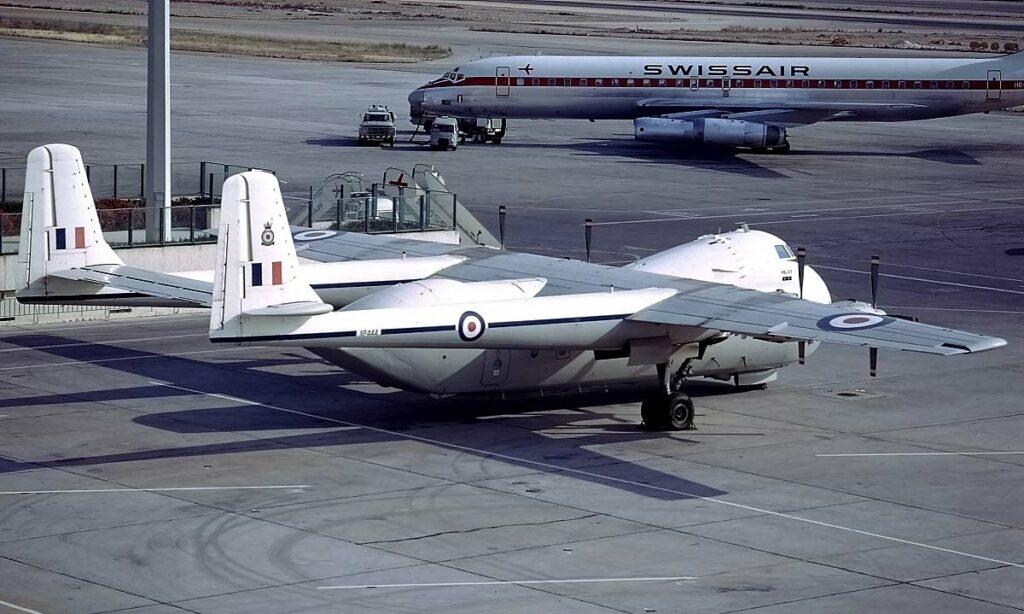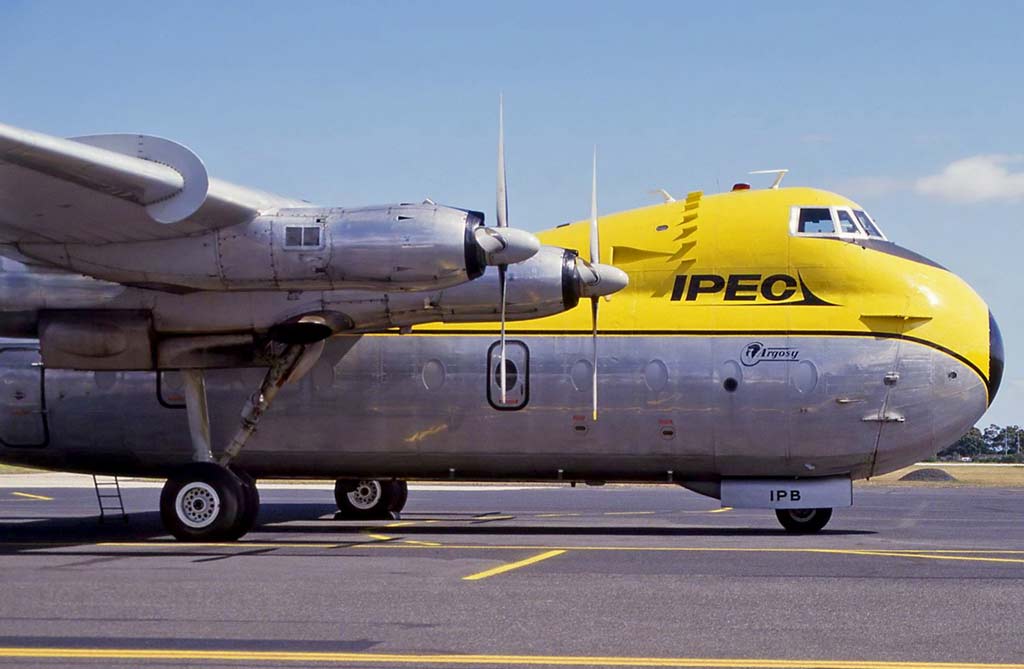The Armstrong Whitworth AW.660 Argosy is a British mid-range transport aircraft, recognized for its high-wing and twin-boom design.
In brief
The Armstrong Whitworth AW.660 Argosy was a British transport aircraft, notable for its unique high-wing, twin-boom design, which facilitated rear-loading capabilities. Introduced in the late 1950s, it was powered by four Rolls-Royce Dart turboprop engines, offering a blend of payload capacity, range, and versatility. The Argosy was employed primarily for military transport, including troop and cargo movement, and saw civilian use in freight operations. Its distinctive design allowed for quick loading and unloading of cargo, making it an efficient logistic aircraft. Despite its operational advantages, the Argosy faced competition from more advanced designs and was eventually phased out of service.

Introduction
The Armstrong Whitworth AW.660 Argosy was developed during a period when air transportation was becoming increasingly vital for both military and civilian applications. The late 1950s and early 1960s saw a growing need for versatile transport aircraft capable of handling a variety of logistics tasks, from troop deployment to cargo delivery. Armstrong Whitworth embarked on the development of the Argosy to meet these needs, aiming to provide a robust and efficient solution for medium-range transport duties.
The program was initiated in response to both Royal Air Force (RAF) requirements and perceived civilian market opportunities. The Argosy’s first flight took place in 1959, marking the beginning of a service life that would see the aircraft operate in diverse roles across military and civilian sectors.
Design
The design of the Armstrong Whitworth AW.660 Argosy was driven by the need for a versatile and efficient transport aircraft. Its most distinctive feature was the high-wing, twin-boom configuration, which not only provided stability and lift but also allowed for a rear-loading fuselage. This design enabled the Argosy to quickly load and unload cargo, a critical capability for both military logistics and commercial freight operations.
The aircraft was equipped with four Rolls-Royce Dart turboprop engines, known for their reliability and performance in a variety of conditions. The Argosy had a maximum payload capacity of around 28,000 pounds (12,700 kilograms) and could accommodate a wide range of cargo types, including vehicles, palletized goods, and troops.
One of the main advantages of the Argosy’s design was its ability to operate from semi-prepared airstrips, enhancing its utility in remote or undeveloped areas. However, the aircraft’s size and performance also imposed limitations on its range and speed, especially when compared to newer jet-powered transport aircraft emerging in the same period.
Performance
The Armstrong Whitworth AW.660 Argosy’s performance was characterized by its operational flexibility rather than outright speed or range. With a cruising speed of approximately 250 mph (400 km/h) and a range of up to 1,780 miles (2,865 kilometers) with maximum payload, the Argosy was well-suited to medium-range transport missions.
Its four Rolls-Royce Dart engines provided a balanced combination of power and fuel efficiency, enabling the aircraft to fulfill a variety of transport roles. The Argosy’s service ceiling of around 25,000 feet (7,620 meters) allowed it to avoid most weather disturbances, further enhancing its operational versatility.
While the Argosy was not the fastest or longest-ranging aircraft in its class, its design and capabilities made it a valuable asset for missions requiring rapid loading and unloading of cargo in challenging conditions.
Variants
The Armstrong Whitworth AW.660 Argosy saw several variants throughout its production and service life, each designed to meet specific operational requirements:
- AW.650: The civilian version of the Argosy, intended for freight and passenger services.
- AW.660: The military variant, featuring enhancements for tactical transport missions, including strengthened floors and improved avionics.
- Series 200: An updated civilian model with increased payload capacity and range.
Each variant of the Argosy reflected ongoing efforts to adapt the aircraft to evolving market and military needs, highlighting its flexibility and utility across different contexts.

Military Use and Combat
The Armstrong Whitworth AW.660 Argosy was primarily utilized by the RAF for a range of military transport duties, including troop movement, cargo delivery, and medical evacuation. Its ability to operate from short and unprepared airstrips made it particularly valuable for supporting operations in remote or conflict-affected regions.
While the Argosy did not participate directly in combat operations, its contribution to logistical support played a crucial role in various military campaigns and peacekeeping missions. The aircraft’s versatility and reliability ensured it remained in service with the RAF until the late 1970s, when it was gradually replaced by more modern transport aircraft.
The Argosy was not widely exported, and its military use remained largely confined to the UK. However, its impact on military logistics and air transport during its service life underscored the importance of versatile and efficient transport aircraft in modern military operations.
The Armstrong Whitworth AW.660 Argosy represents an important chapter in the history of military and civilian air transport. Its distinctive design and capabilities reflected the evolving needs of mid-20th-century air logistics, offering a versatile and efficient solution for a range of transport challenges. While the Argosy was eventually surpassed by newer aircraft technologies, its contribution to the development of air transport and military logistics remains a noteworthy legacy of this unique aircraft.
Back to Transport planes.